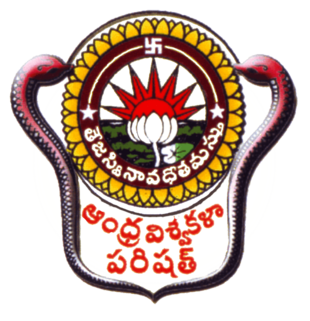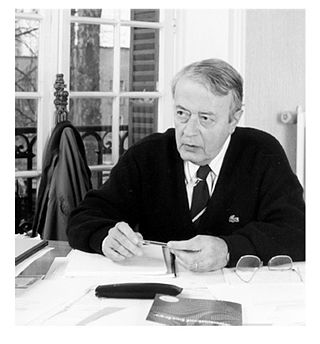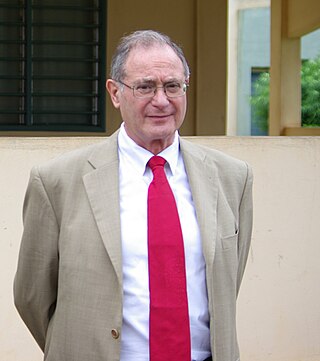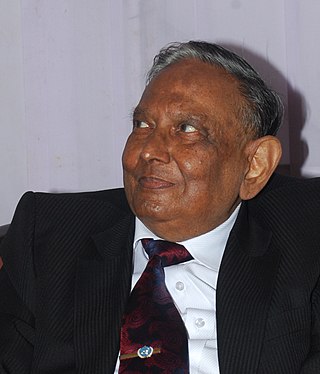Geostatistics is a branch of statistics focusing on spatial or spatiotemporal datasets. Developed originally to predict probability distributions of ore grades for mining operations, it is currently applied in diverse disciplines including petroleum geology, hydrogeology, hydrology, meteorology, oceanography, geochemistry, geometallurgy, geography, forestry, environmental control, landscape ecology, soil science, and agriculture. Geostatistics is applied in varied branches of geography, particularly those involving the spread of diseases (epidemiology), the practice of commerce and military planning (logistics), and the development of efficient spatial networks. Geostatistical algorithms are incorporated in many places, including geographic information systems (GIS).

Mindat.org is a non-commercial interactive online database covering minerals across the world. Originally created by Jolyon Ralph as a private project in 1993, it was launched as a community-editable website in October 2000. As of 2023 it is operated by the Hudson Institute of Mineralogy.

Andhra University is a public university located in Visakhapatnam, Andhra Pradesh, India. It was established in 1926. It is graded as an A++ institution by NAAC receiving a score of 3.74 on a scale of 4.

Andhra University College of Engineering, also known as AU College of Engineering, is an autonomous college and extension campus of the Andhra University located at Visakhapatnam, India. It is the first Indian institution to have a Department of Chemical Engineering.

Georges François Paul Marie Matheron was a French mathematician and civil engineer of mines, known as the founder of geostatistics and a co-founder of mathematical morphology. In 1968, he created the Centre de Géostatistique et de Morphologie Mathématique at the Paris School of Mines in Fontainebleau. He is known for his contributions on Kriging and mathematical morphology. His seminal work is posted for study and review to the Online Library of the Centre de Géostatistique, Fontainebleau, France.
Fawwaz T. Ulaby is Arthur F. Thurnau Professor of Electrical Engineering and Computer Science at the University of Michigan in Ann Arbor and formerly the Founding Provost and Executive Vice President of the King Abdullah University of Science and Technology (KAUST) and R. Jamieson and Betty Williams Professor of Electrical Engineering and Computer Science at the University of Michigan.

Jean Paul Frédéric Serra is a French mathematician and engineer, and known as one of the co-founders of mathematical morphology.

Uppugunduri Aswathanarayana was the Honorary Director of the Mahadevan International Centre for Water Resources Management, India. He is counted among the doyens of geology in independent India and revered as a leading scientist from Andhra Pradesh.
Jayant R. Haritsa is an Indian computer scientist and professor. He is on the faculty of the CDS and CSA departments at Indian Institute of Science, Bangalore, India. He works on the design and analysis of Database Systems. In 2009 he won the Shanti Swarup Bhatnagar Prize sponsored by CSIR, India. In 2014 he won the Infosys Prize for Engineering.

The International Association for Mathematical Geosciences (IAMG) is a nonprofit organization of geoscientists. It aims to promote international cooperation in the application and use of mathematics in geological research and technology. IAMG's activities are to organize meetings, issue of publications on the application of mathematics in the geological sciences, extend cooperation with other organizations professionally concerned with applications of mathematics and statistics to the biological sciences, earth sciences, engineering, environmental sciences, and planetary sciences. IAMG is a not for profit 501(c)(3) organization.
The Georges Matheron Lecture Series is sponsored by the International Association for Mathematical Geosciences (IAMG) to honor the legacy of the French engineer Georges François Paul Marie Matheron, known as the founder of geostatistics and a co-founder of mathematical morphology. The Georges Matheron Lecture is given by a scientist with proven research ability in the field of spatial statistics or mathematical morphology. It is presented annually if an eligible and worthy nominee is found. The first recipient of the award was Jean Serra, for a long time a scientists with the Centre of Mathematical Morphology, Fontainebleau. Serra delivered the first lecture at the IAMG conference in Liège, Belgium in 2006. The IAMG Lectures Committee seeks nominations and makes the selection.

John H (Jack) Schuenemeyer is President of Southwest Statistical Consulting, Cortez, Colorado. He is also Professor Emeritus of Statistics, Geology, and Geography, University of Delaware. Schuenemeyer was elected as a Fellow of the American Statistical Association in 1991. International Association for Mathematical Geosciences has awarded him the IAMG Distinguished Lectureship in 2012. In 2004, he was awarded John Cedric Griffiths Teaching Award by the International Association for Mathematical Geosciences.

Jón Atli Benediktsson is the rector and president of the University of Iceland and professor in electrical and computer engineering at the university. His research fields are remote sensing, image analysis, pattern recognition, machine learning, data fusion, analysis of biomedical signals and signal processing. He has published over 400 scientific articles in these fields and is one of the most influential scientists in the world according to Publons’ lists in 2018 and 2019.
Daniel Francis Merriam was an American geologist best known for fostering the development of quantitative modeling in geology after the advent of digital computers. He first joined the Kansas Geological Survey in 1953, initially working under the direction Raymond C. Moore to have a more accurate knowledge about the geology of the state. His fascination with the new possibilities offered by computers started ten years later while working with John W. Harbaugh at Stanford University as Visiting Research Scientist. In the following seven years, he was active organizing colloquia and as editor of the Computer Contributions, who saw 50 publications in the series by pioneers in the new field. Merriam accepted the position of Chairman of the Department of Geology at Syracuse University in 1971 and moved to the same position at Wichita State University in 1981, coming back to the Kansas Geological Survey in 1991 to retire in 1997, remaining as an Emeritus Scientist.

Kamal Sarabandi is an Iranian-American scientist and the Fawwaz T. Ulaby Distinguished University Professor of EECS and the Rufus S. Teesdale endowed Professor of Engineering at the University of Michigan, where he teaches and conducts research on the science and technology of microwave and millimeter wave radar remote sensing, wireless technology, electromagnetic wave propagation and scattering, metamaterials, antenna miniaturization, and nano antennas.
Noel Andrew Cressie is an Australian and American statistician. He is Distinguished Professor and Director, Centre for Environmental Informatics, at the University of Wollongong in Wollongong, Australia.

Xiaogang Ma or Marshall Ma is a Chinese data science and geoinformatics researcher at the University of Idaho (UI), United States. He is an associate professor in the department of computer science at UI, and also affiliates with the department of earth and spatial sciences and several research institutes and centers at the university.
Thomas J. Schmugge is an American physicist and hydrologist.












